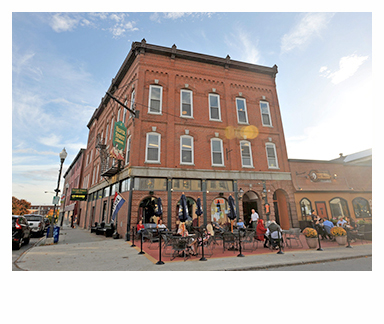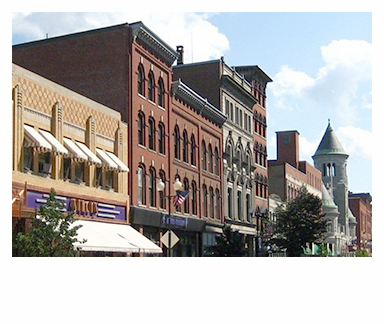Downtowns originally formed out of necessity. In Maine, the first city centers were established along major rivers, which powered mills and provided a way to move goods. Residents and merchants settled nearby, and cities built out from there.
By the time the U.S. economy took off following World War II, downtowns were literally and figuratively the center of most communities, a shared common space that gave cities and towns their identity.
Then came malls, interstate highway systems and the loss of industry, and most Maine downtowns were left to rot in their red-brick shells.
For the last 15 years or so, there have been efforts to restore many of these downtowns to their former glory, with mixed results. However, there should be no doubt that downtowns can thrive again.
In fact, vibrant downtowns that attract and reward investment, and which keep local money local, may be the key to the future for communities in central and northern Maine.
But it will take the full support of each community’s residents to get there.
PROGRESS MADE
Some are further along than others. Hallowell has a great small-town downtown. Gardiner, which recently suffered a setback, and Skowhegan have both made progress, and have a lot of promise.
And there has been a lot of recent good news for Augusta and Waterville, where investors are showing a lot of enthusiasm for once-neglected downtowns.
In Waterville, Colby College has purchased three vacant buildings on Main Street as part of a plan to help revitalize downtown, with the goal of having more students live, work and serve the community in that area.
In both cities, private investors are showing confidence in downtown, building new apartment buildings and retail and restaurant space, taking advantage of the scenic beauty of the river that got it all started a couple centuries ago but was underutilized in the intervening years.
It was encouraging to see a local developer, Richard Parkhurst, move so quickly to purchase a building on Water Street in Augusta after it was shut down for code violations and emptied of tenants by its former, out-of-state owner.
And it’s promising that the new apartments made available in the two cities, some of which are of the high-end variety, have been so popular. That speaks to the ability for the cities to draw both baby boomers and millenials, a key factor for a vibrant downtown.
COMMUNITY SUPPORT
For the success to be lasting, the rest of the community has to support it too, not only by voting for officials and backing local policies that foster downtown growth — creating safe, walkable spaces and more parking, for example — but also by frequenting downtown businesses.
Developments such as the Marketplace at Augusta and Augusta Crossing give the sheen of economic development, but their impact locally is not as strong as it seems.
Any addition to the tax base is a positive, but the entire Augusta Crossing only offsets about 1 percent of growth in the city budget, and most of the spending goes to the headquarters of national chains.
In contrast, spending at the kind of local establishments that make up downtowns stays in town. A 2011 study focusing on Portland found that every $100 spent at a locally owned business generates $58 in local impact, as opposed to $33 for national chains.
Simply shifting a small portion of spending to local businesses downtown would have huge impact on a city’s economic activity.
That’s the future economy for communities in central Maine — a cluster of small, local businesses, all buying from and selling to each other, all in it together.
That includes residents, who now that public officials and private investors have stepped up, have to step up too, if that’s the kind of community they want.
Copy the Story LinkSend questions/comments to the editors.




Success. Please wait for the page to reload. If the page does not reload within 5 seconds, please refresh the page.
Enter your email and password to access comments.
Hi, to comment on stories you must . This profile is in addition to your subscription and website login.
Already have a commenting profile? .
Invalid username/password.
Please check your email to confirm and complete your registration.
Only subscribers are eligible to post comments. Please subscribe or login first for digital access. Here’s why.
Use the form below to reset your password. When you've submitted your account email, we will send an email with a reset code.